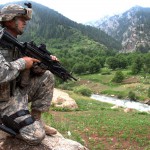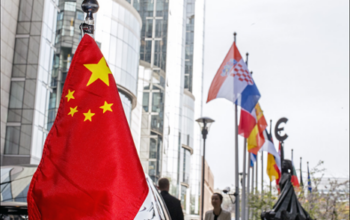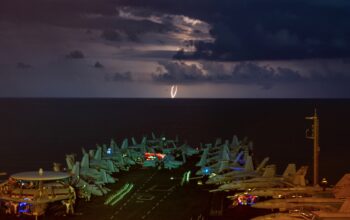Transnistria. Although it is independent, has its own currency, army, public institutions and even passports, much of the world has no idea it exists. It is a self-declared country, a breakaway state from Moldova that is not recognized by any other country in the world. According to the UN, Transnistria is an integral part of Moldova and is recognized by other countries as such. To understand how Transnistria came to be, we should go back in time to the period of the Soviet Union
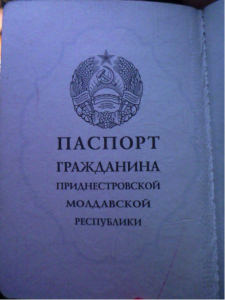
From the end of the Second World War to the beginning of the 90’s, Moldova was part of the Soviet Empire. With the collapse of the Soviet Union in the early 90s, Moldova then became an independent country. Despite this, a great conflict remained in the new country as those at the east of the Dniestr river, the majority of whom were of Russian and Ukrainian descent, declared themselves independent from Moldova since they felt more allied to Russian interests. Because of this disagreement, there was a brief civil war in 1992. Thanks to the support of the 14th Russian Army, which was based inside Transnistria, the outcome of this war was that Transnistria would be allowed to maintain its independence from Moldova. Russia intervened because it considers the region in its backyard and believes it has the right to intervene at any time once its interests are in jeopardy. In this case it was the “protection” of civilians from Russian descent. However this is probably an excuse to keep its troops in countries that broke away from the Soviet Empire since the same situation happened in other post-Soviet “frozen conflicts” like South Ossetia and Abkhazia in Georgia and Nagorno-Karabakh in Azerbaijan. In the case of Moldova and Georgia, this is a clear attempt by Russia to prevent ex-Republics aligning with the West, especially the European Union in Moldova’s case and NATO for Georgia.
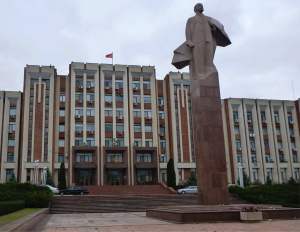 Since the end of the war and the creation of this peculiar “country”, there have been rumors about all kinds of shady business within this territory like human trafficking and commerce of organs, drugs and steroids. One of the most widely known stories (and possibly the only reason why some people have heard of Transnistria) is that of the famous arms dealer portrayed in the movie “Lord of War”, Viktor Bout, who got most of his heavy weaponry from the 14th Russian Army in Transnistria. It has been stated that with the sudden collapse of the Soviet Union, a lot of the control over its less sophisticated arsenal was lost or became very lax. Taking advantage of this situation, Bout allegedly used his influence as ex-Soviet Army officer to gain access to part of the Russian arsenal left in Transnistria.
Since the end of the war and the creation of this peculiar “country”, there have been rumors about all kinds of shady business within this territory like human trafficking and commerce of organs, drugs and steroids. One of the most widely known stories (and possibly the only reason why some people have heard of Transnistria) is that of the famous arms dealer portrayed in the movie “Lord of War”, Viktor Bout, who got most of his heavy weaponry from the 14th Russian Army in Transnistria. It has been stated that with the sudden collapse of the Soviet Union, a lot of the control over its less sophisticated arsenal was lost or became very lax. Taking advantage of this situation, Bout allegedly used his influence as ex-Soviet Army officer to gain access to part of the Russian arsenal left in Transnistria.
It may seem weird that someone would like to visit a place like this, but since I am a student of International Relations and an avid traveler, a trip like that would be the perfect field experience to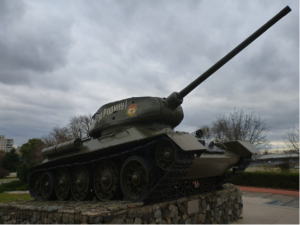 understand a micro example of a geopolitical dispute. To accomplish this task I had to go to Moldavia which is probably the easiest way to enter Transnistria, but it is also possible to go in through Ukraine. It was surprisingly simple as I merely took a van from Moldova’s capital, Chisinau which run every 30 minutes to Tiraspol, to the capital of Transnistria.
understand a micro example of a geopolitical dispute. To accomplish this task I had to go to Moldavia which is probably the easiest way to enter Transnistria, but it is also possible to go in through Ukraine. It was surprisingly simple as I merely took a van from Moldova’s capital, Chisinau which run every 30 minutes to Tiraspol, to the capital of Transnistria.
After 40 minutes on the van I started getting close to the “border”. Since Moldova doesn’t recognize this breakaway province, they also don’t recognize that there is a border between them, so the last authorities on the Moldovan side are not border guards but “normal policeman” who ensures border control.
After passing through Moldovan border control, I saw the Russian “peacekeepers” with their Kalashnikovs and tanks. They wear blue berets and helmets like UN peacekeepers, but without the UN emblem and their status is disputed since they are not part of any UN mission. They are not under UN mandate and according to most Western countries they are there in a violation of Moldavian sovereignty. On the other hand, Russia claims that its presence 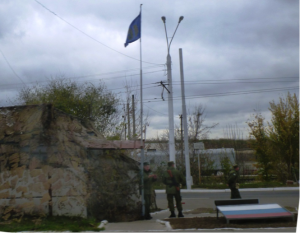 there is part of a 1992 cease-fire agreement between Moldova and Transnistria, stating that they are there to prevent a conflict between both sides. This is an illusion since in the event of conflict the barrels of the blue helmet’s guns would most likely only point to one direction.
there is part of a 1992 cease-fire agreement between Moldova and Transnistria, stating that they are there to prevent a conflict between both sides. This is an illusion since in the event of conflict the barrels of the blue helmet’s guns would most likely only point to one direction.
After driving past the “peacekeepers” and their tanks, I arrived at the border control of Transnistria where everyone had to get out the van to have their documents checked. Outside everything is controlled by the serious eyes of the police but inside the immigration office is chaotic with people pushing in line to get their entry papers ready. Since no “real” country has diplomatic relations with Transnistria, the officials stamped a sheet of paper instead of my passport[1].
Shortly after, I reached the main bridge crossing the Dniestr River. In 1992, this was the bridge where Russian tanks crossing into the Moldovan side could be seen during the war. Today, however, this is yet another check point manned by Russian troops.
Once in the center of Tiraspol, I started to walk through the main avenue. On one side I could see the imposing statue of Lenin with his clenched fist and on the other side I could still see an old Soviet tank with the classic letters CCCP on the side, which is the Russian Cyrillic abbreviation for the USSR. Continuing down the avenue I saw a memorial to victims of the 1992 conflict as well as other 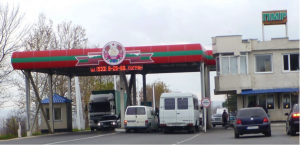 nationalist symbols such as flags and communist red stars. Everything seemed almost deserted, without many people, stores, and less cars than you would expect for such a large avenue. I had to be careful when taking pictures, especially of Lenin’s statue. While I was trying to take a picture a soldier came out from the building behind it and made a clear gesture for me to stop. This attitude from the soldier is quite understandable since there are no other tourists around and they are not used to people photographing monuments. Anyone taking pictures may be thought of as Moldavian spy.
nationalist symbols such as flags and communist red stars. Everything seemed almost deserted, without many people, stores, and less cars than you would expect for such a large avenue. I had to be careful when taking pictures, especially of Lenin’s statue. While I was trying to take a picture a soldier came out from the building behind it and made a clear gesture for me to stop. This attitude from the soldier is quite understandable since there are no other tourists around and they are not used to people photographing monuments. Anyone taking pictures may be thought of as Moldavian spy.
I tried to strike up some conversation with the locals on the street but most of them did not speak English. It was a little bit easier to have some interaction with the youngsters who were very curious to know more about me. The ones I could talk to always asked me what I was doing there since they are not used to seeing outsiders. I was also told that everyone in Transnitria held dual citizenship, usually from Russia, Ukraine or Moldova since otherwise they would be a stateless person, with a passport that is not recognized around the world. Furthermore, I learned that such an unrecognized county can only survive because it has full economic and military support from Russia, which was obvious by all the Russian products and brands I saw on stores around Tiraspol.
Leaving this self-declared country at the end of the day, I wondered how long this bizarre situation would last. Last November Moldova signed an association agreement with the EU which usually represents the first steps for a future full membership with the European Union. However, Transnistria has said it has no interest in the EU and prefers an association with 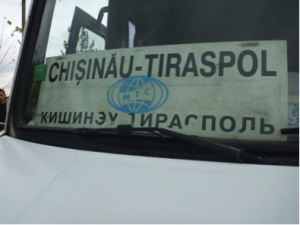 Russia. This situation gives Russia a partial victory. Since it cannot stop Moldova from joining the EU, it can at least stop it from joining NATO which is usually a natural step. But since NATO would probably not accept a country that has no full control of its own territory, keeping Transnistria on Russia’s side would definitely deny Moldova from joining NATO any time soon and thus avoiding Russia’s old enemy of getting even closer to its Southwest border.
Russia. This situation gives Russia a partial victory. Since it cannot stop Moldova from joining the EU, it can at least stop it from joining NATO which is usually a natural step. But since NATO would probably not accept a country that has no full control of its own territory, keeping Transnistria on Russia’s side would definitely deny Moldova from joining NATO any time soon and thus avoiding Russia’s old enemy of getting even closer to its Southwest border.
This same attitude of Russia seeking to enforce its military and economic power over ex-Soviet republics is what led to the civil unrest we are seeing in Ukraine in the last few months. Instead of following Moldova and signing the association agreement with EU, Ukraine prime minister preferred to keep its alignment with Russia in exchange for a 15 billion dollars package from Russia. The only problem is that the majority of the Ukrainian population wants to progress towards the West and EU and the Ukrainian government together with the Eastern part of the country prefers the Russian side. This tug of war between both sides reflects nothing more than a geopolitical dispute between Brussels and the Kremlin for the power over ex-Soviets republics. The unrest in Ukraine’s capital Kiev has been unravelling for almost three months. Barricades were formed by the protesters at Kiev’s main square and there is no end in sight (I will leave it to change at the last minute). We can only hope the same situation doesn’t happen in the “border” between Moldova and Transnistria because unlike Ukraine, there are more weapons available and the consequences can be dire.
1 South Ossetia and Abkhazia recognize Transnistria as an independent country.
This article was based on a previous version originally published by http://
By Rodrigo de Souza
Image credit: Rodrigo de Souza


